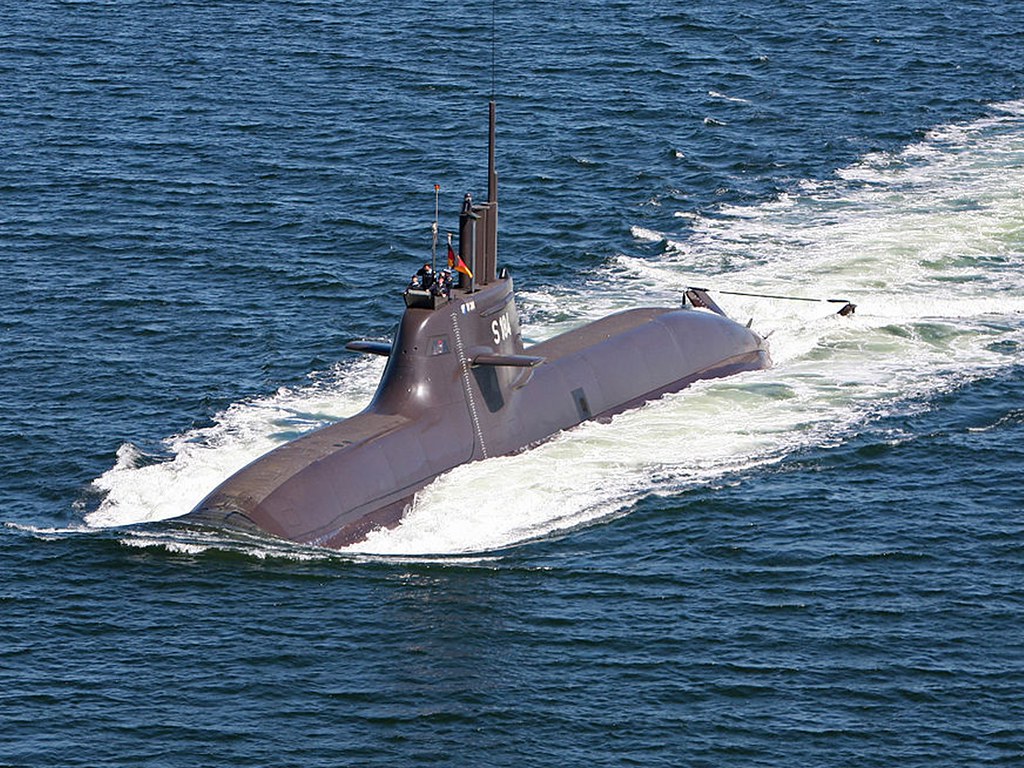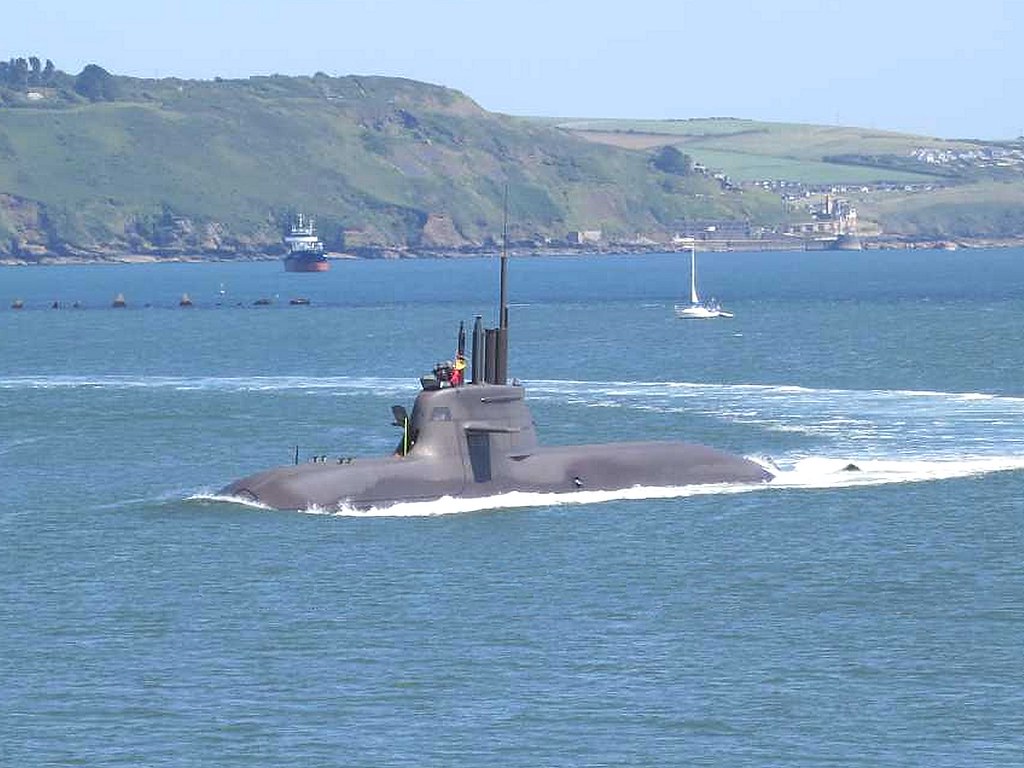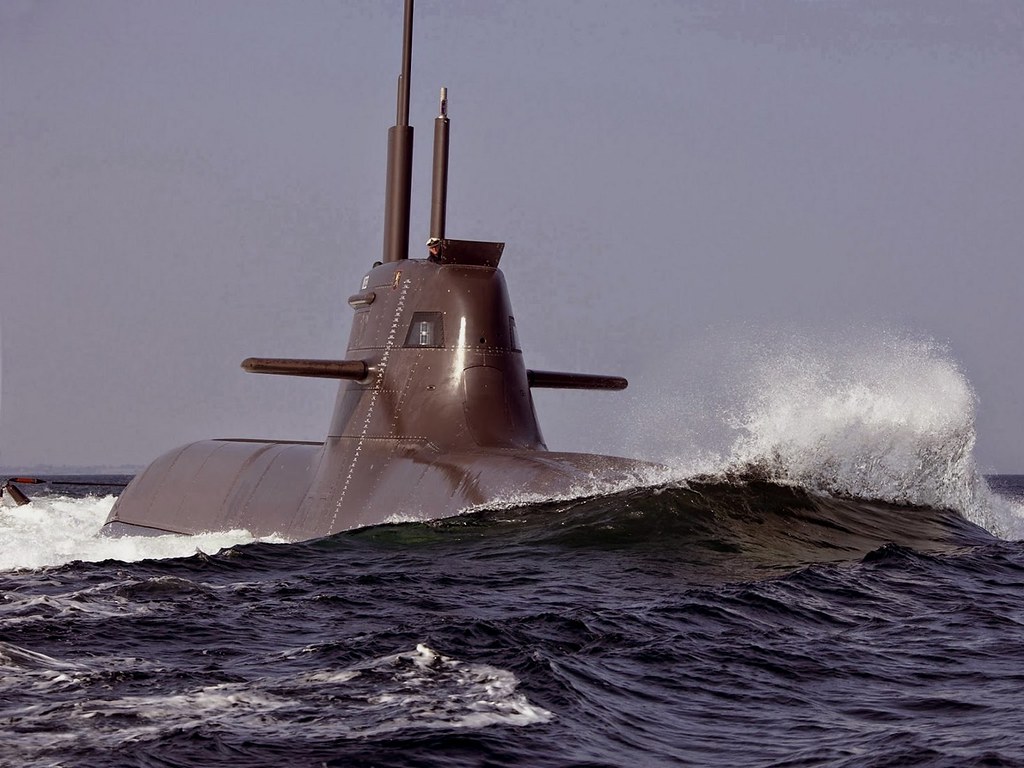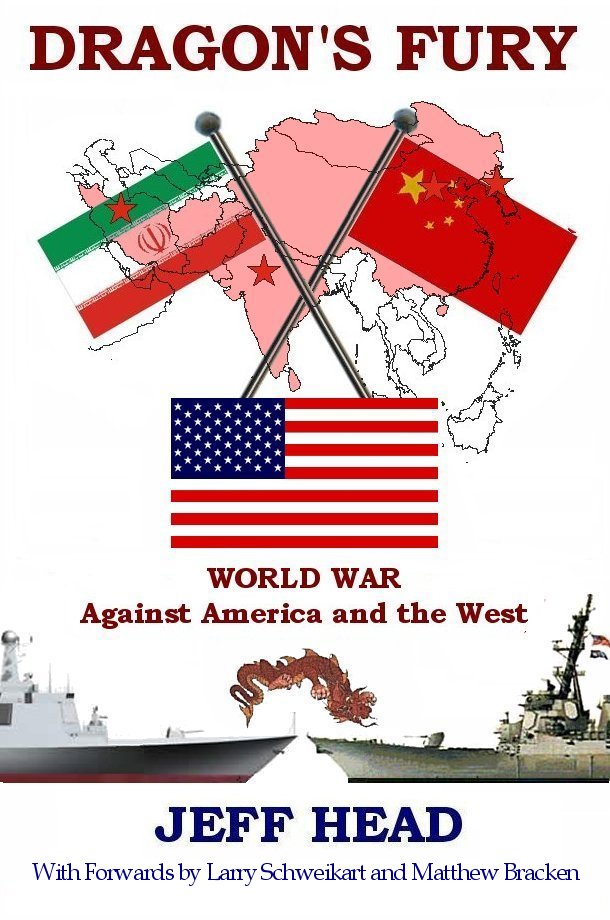 |
|
|
|
German Type 212 Class, Air Independant Propulsion (AIP) Submarine S184 The German Type 212 class, also being built as the Italian Todaro class as a joint venture, is a highly advanced design of non-nuclear submarine developed by Howaldtswerke-Deutsche Werft AG (HDW) for the German and Italian navies. It features conventiona diesel propulsion system, couple with an additional air-independent propulsion (AIP) system using a Siemens proton exchange membrane (PEM) with compressed hydrogen fuel cells. The submarines can operate at high speed on diesel power or switch to the AIP system for silent slow cruising, staying submerged for up to three weeks without surfacing and with little exhaust heat. The AIP system is also said to be vibration-free, extremely quiet and virtually undetectable. The need for diesel-electric boats to have to ruface, or come very close to the surface to get air to recharde their batteris has been the downfall of these submarines because they are very vulnerable when near the surface. Althugh several attempts at AIP had been tested in the past the Type 212 is the first fuel cell propulsion system equipped submarine series to be built in series production. Since its initial production in the late 1990s, other systems have been produced, most notable the Japanese sryu class, which use a Kockums Stirling engines license-built by Kawasaki Heavy Industries. Nine of those boats have been built and launched, and four more are to be launched. But the last batch will apparently have their air independent propulsion systems replaced with banks of Li-Ion batteries. In addition to these, the latest Russian Kilo submarines, which are built for several countries are said to be AIP capable, the later Chinese Yuan class boats are AIP capable, and the new Indian, French Scorpène class, and the Swedish Gotland class (which developed the Kockums Sterline AIP engine). The French Module d'Energie Sous-Marine Autonome (MESMA) system for the Scorpène class is essentially a propulsion system with heat being generated by ethanol and oxygen. The combustion of the ethanol and stored oxygen, at a pressure of 60 atmospheres, generates steam which powers a conventional turbine power plant. This pressure-firing allows exhaust carbon dioxide to be expelled overboard at any depth without an exhaust compressor. The French are said to be developing a second-generation hydrogen fuel cell AIP modules for future Scorpène models. The latest Israeli Dolphin class of three vessels (to add to their first three vessels), of which two have been completed, are hevily modified Type 212 boats which are longer and 500 tons heavier. The German Type 212 design is now a very well tested and proven technology and other countries are purchasing the Type 212 and its export version (the Type 214). Italy has built foru and intends to build two more. Poland plans on acquiring two vessels, and Norway has signed an agreement with German for four of the vessels. At this point that means that a total of twenty four vessels are planned, of which twelve have already been built, six of them for German to date, who will buy two more. At the beginning of the 1990s the German Navy was seeking a replacement for the Type 206 submarines. Initial study started on an imprved Type 209 design, which the Germans were building at the time, but with much better stealth features and with AIP capability, to be called Type 212. The final program design was cmpleted in the early 1990s and then offered and accepted in 1994 which Germany and Italy began worked together in designing. They came up with a design that would allow the boats to operate in the shallow and confined waters of the Baltic Sea for the Germans, and in the deeper waters of the Mediterranean Sea and Atlantic for both bnations. On 22 April 1996 a Memorandum of Understanding (MOU) gave the start to the cooperation for building four vessels for German Navy and four vessels for Italian Navy. Its main aim was the construction of identical boats and the start of a collaboration in logistic and life-cycle support for the two navies. The German government placed an initial order of four Type 212A submarines in 1998. The German Submarine Consortium built them at the shipyards of HDW and Thyssen Nordseewerke GmbH (TNSW) of Emden. Different sections of the submarines were constructed at both German sites and then half of them were shipped to the other yard so that both HDW and Thyssen Nordseewerke assembled two complete submarines each. Partly owing to the "X" arrangement of the stern planes, the Type 212 is capable of operating in as little as 17 metres of water, allowing it to come much closer to shore than most contemporary submarines. This gives it an advantage in covert operations, as SCUBA-equipped commandos operating from the boat can surface close to the beach and execute their mission more quickly and with less effort. A notable design feature is the prismatic hull cross-section and smoothly faired transitions from the hull to the sail, improving the boat's stealth characteristics. The ship and internal fixtures are constructed of nonmagnetic materials, significantly reducing the chances of it being detected by magnetometers or setting off magnetic naval mines. Although hydrogen–oxygen propulsion of the past had been considered for submarines as early as World War I, the concept was never able to be seriously considered because iot was simply too dangerous due to the volatile elements being very suseptable to fire and explosion. Engineers were able to surmount these concerns and difficulties in the Type 212 by storing the fuel and oxidizer in sepearat tanks outside the crew space, between the pressure hull and outer light hull. The gases are piped through the pressure hull to the fuel cells as needed to generate electricity, but at any given time there is only a very small amount of gas present in the crew spaces where they might react to one another. Currently, the latest Type 212A design is capable of launching fiber optic-guided DM2A4 Seehecht ("Seahake") heavyweight torpedoes, WASS BlackShark torpedoes and short-range missiles from its six torpedo tubes, which use a water ram expulsion system. Future capability may include tube-launched cruise missiles. The short-range missile IDAS (based on the IRIS-T missile), primarily intended for use against air threats, but has been modified to also be able to target small or medium-sized sea- or near land targets, is currently being developed by Diehl BGT Defence to be fired from Type 212's torpedo tubes. IDAS is fiber-optic guided and has a range of approx. 20 km. Four missiles fit in one torpedo tube, stored in a magazine.[11] First deliveries of IDAS for the German Navy were scheduled from 2014 on. A 30 mm auto-cannon called Muräne (moray) to support diver operations or to give warning shots is being considered, too. The cannon, probably a version of the RMK30 built by Rheinmetall, will be stored in a retractable mast and can be fired without the boat emerging. The mast will also be designed to contain three Aladin UAVs for reconnaissance missions. This mast is likely to be mounted on the second batch of Type 212 submarines for the German Navy. The charateristics of Type 212 Submarine class are as follows:
Displacement: This model will represent the forth boat built, the S184, U34, which was laid down in December 2001, launched in July 2006, and became operational in May 2007. Introduction and What's in the Box - March 11, 2017 Hobby Boss is an excellent injected mold plastic model vendor. They make numerous models, and especially in 1/350 scale they make excellent submarines. Their models are always well done, with consice, clear instructions, color painting schemes, and piees that have very little or no flash left over from the production process, and that are very detailed, small parts wherever such detail is necessary. This kit for the German Type 212 submarine lives up to all of that. As almost always is the case for these modern submarines, there are not that many pieces necessary. In this case two pieces for the hull, one sprue for the control surfaces, the top of the sail which can show the antennae either up or down and stored away, and for the two different options of propellers, and then for all of the antennae and sensors on the sail. There is alos a nce photo etch metal sprue for the props, the protective shield on the sail for men their on watch, and for the towed array and the plaque for the stand. I am building the submarine showing the sail with all of the antennae and sensors up, and with the towed array stowed around the controopl surfaces aft on theboat. Here's how everything looed out of the box:
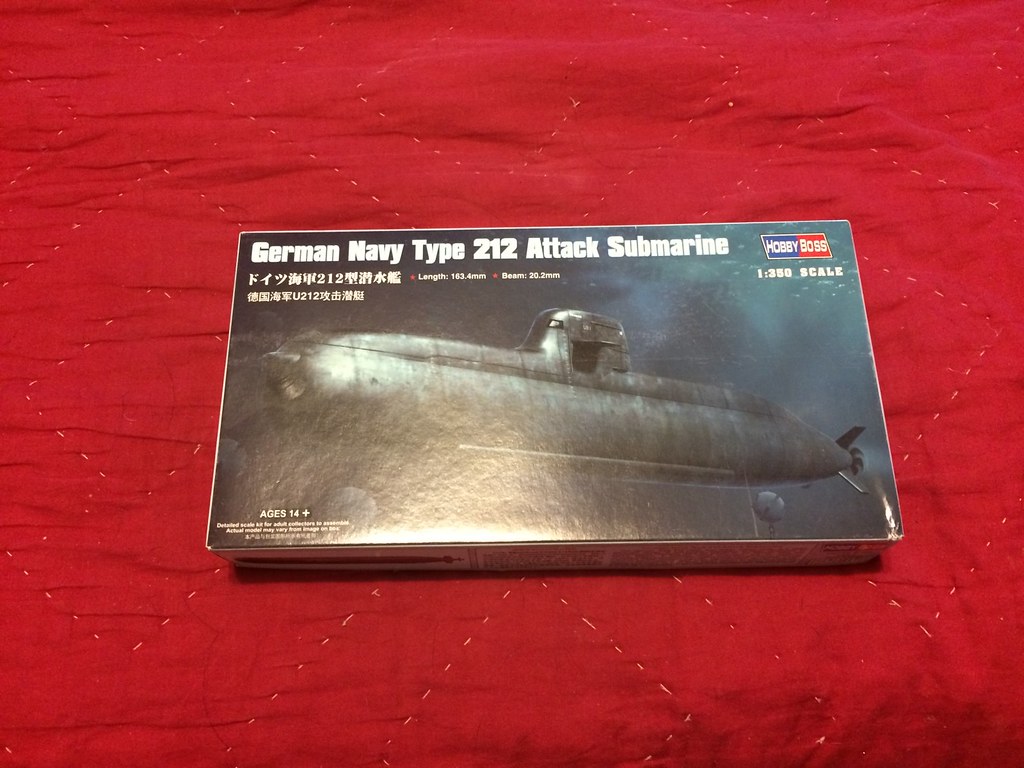
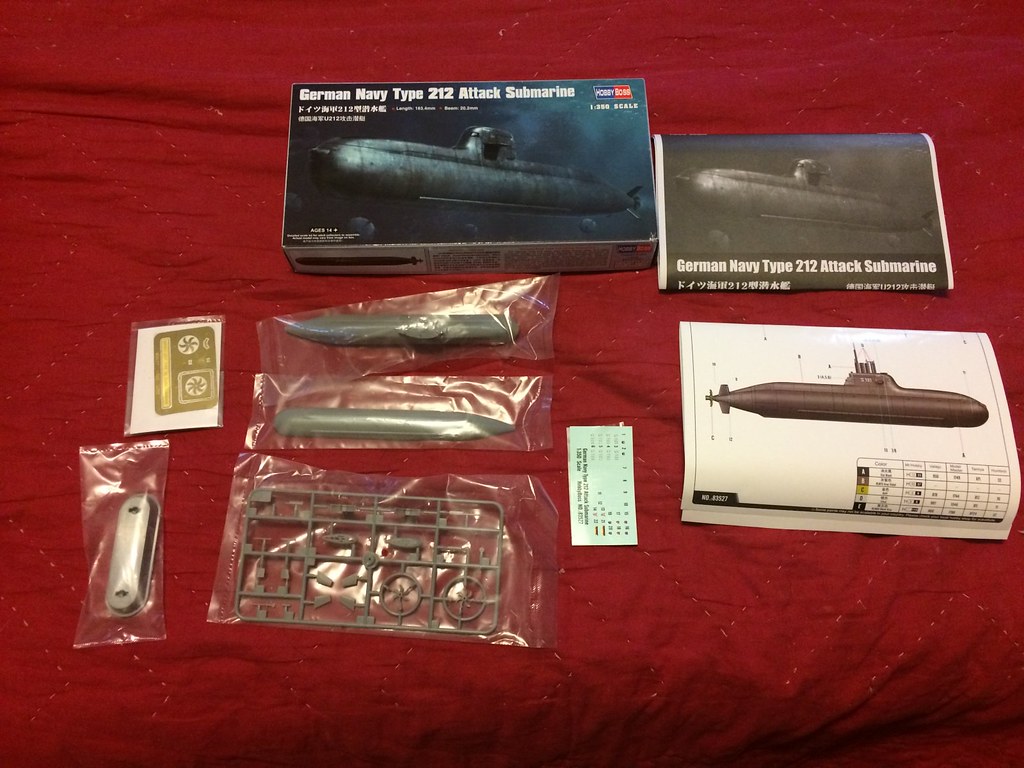
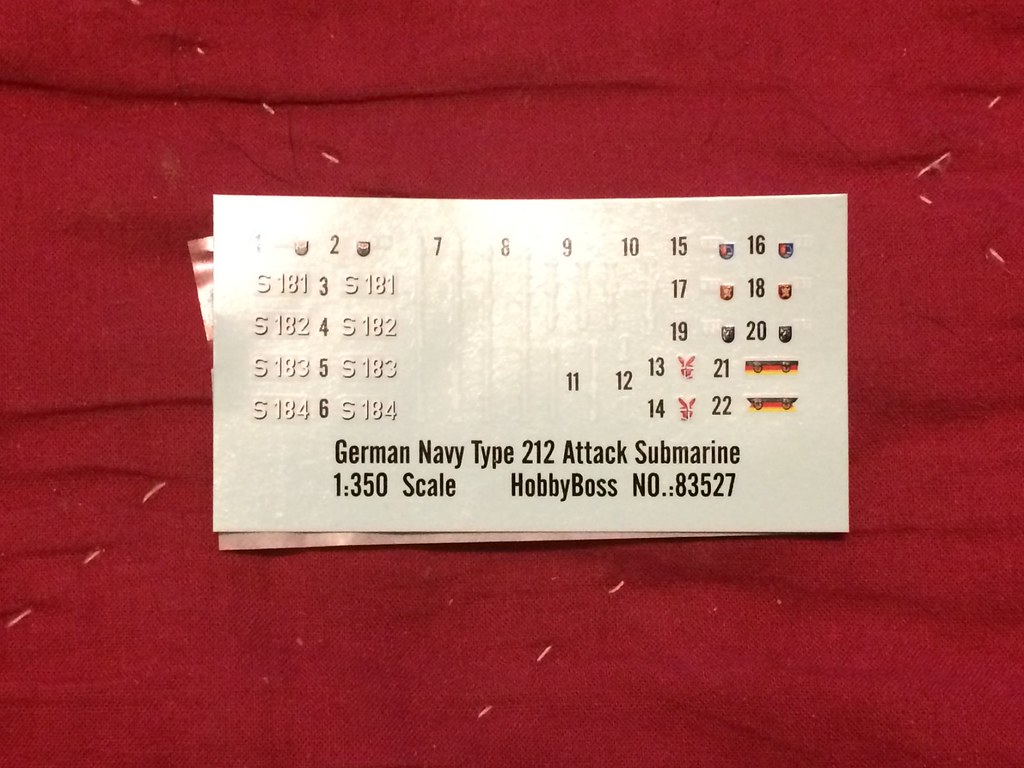
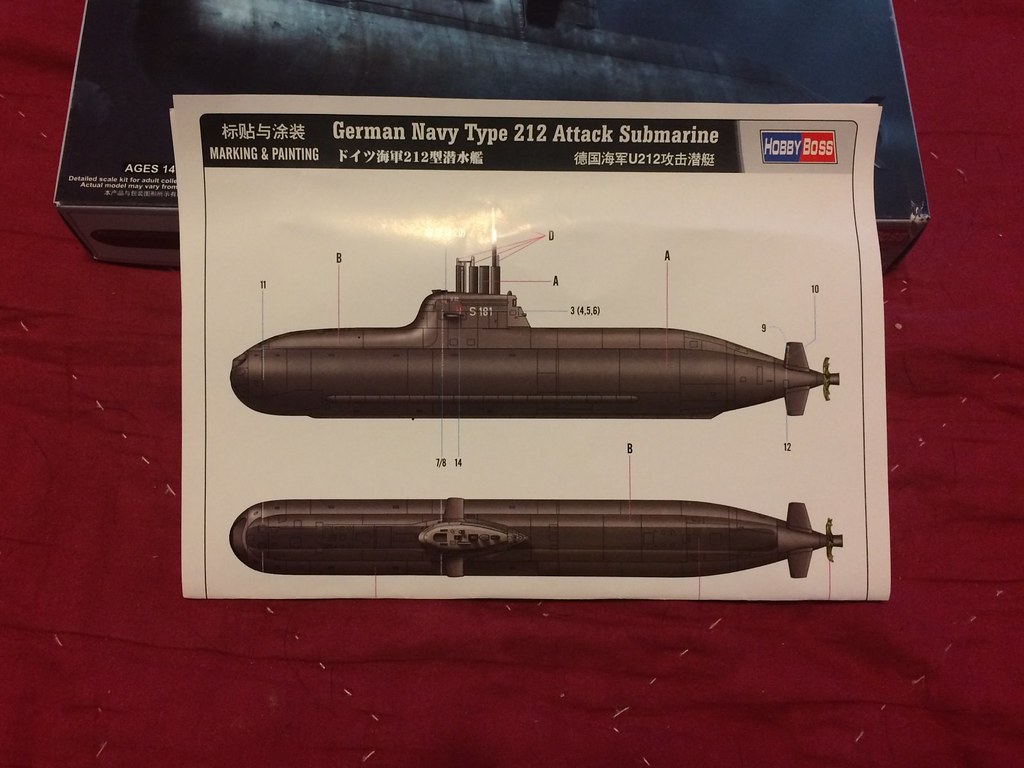
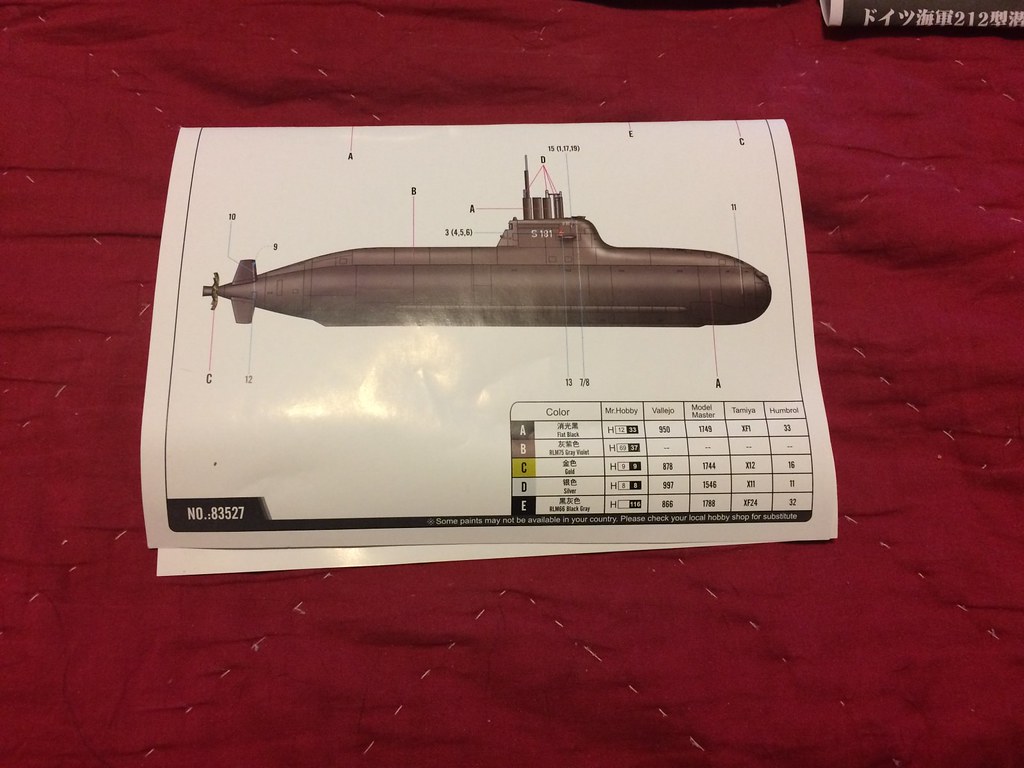
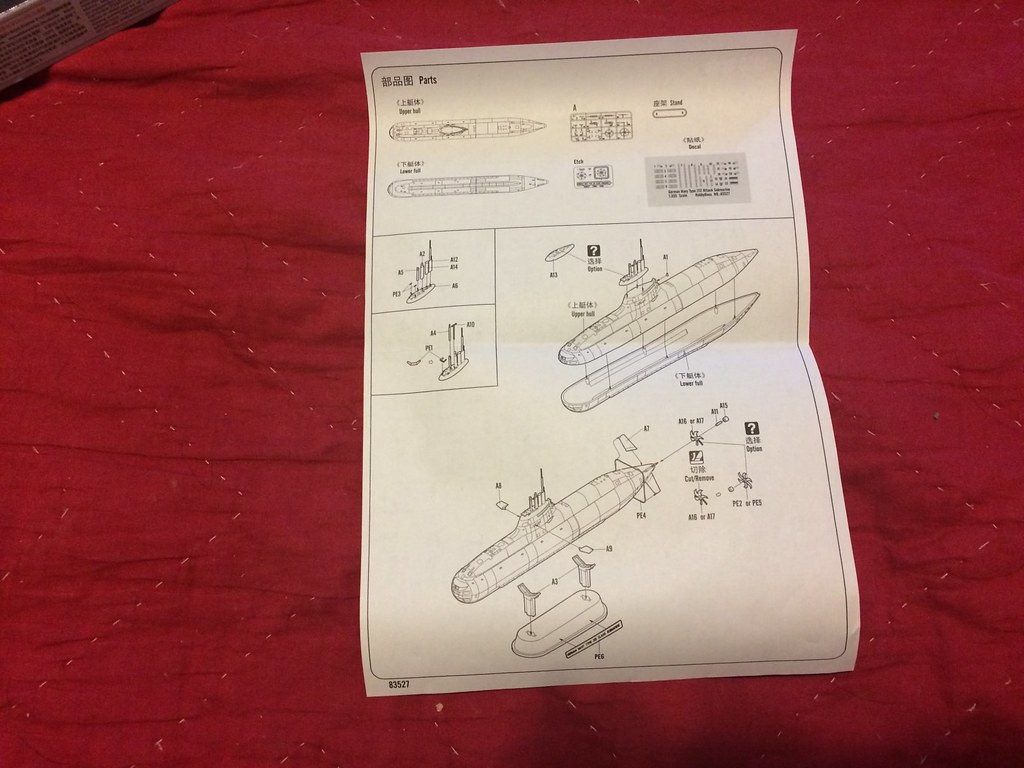
The Build - The hull and dive and control planes - March 11, 2017 I started the model by bklueing the hull together and then adding the top of the sail and the control surfaces. I then painted the sup with the flat black called out for the bottom, a dark gray (I used Model Master engine gray) for the walking surface on the weather deck in fron of and to the aft of the sail, and then mixed TEstors purple, and MOdel Master engine gray until I got as close to the distinctive purple/violet gray you see in the pictures of the vessel and called out for in the instructions. Here''s how that looked:

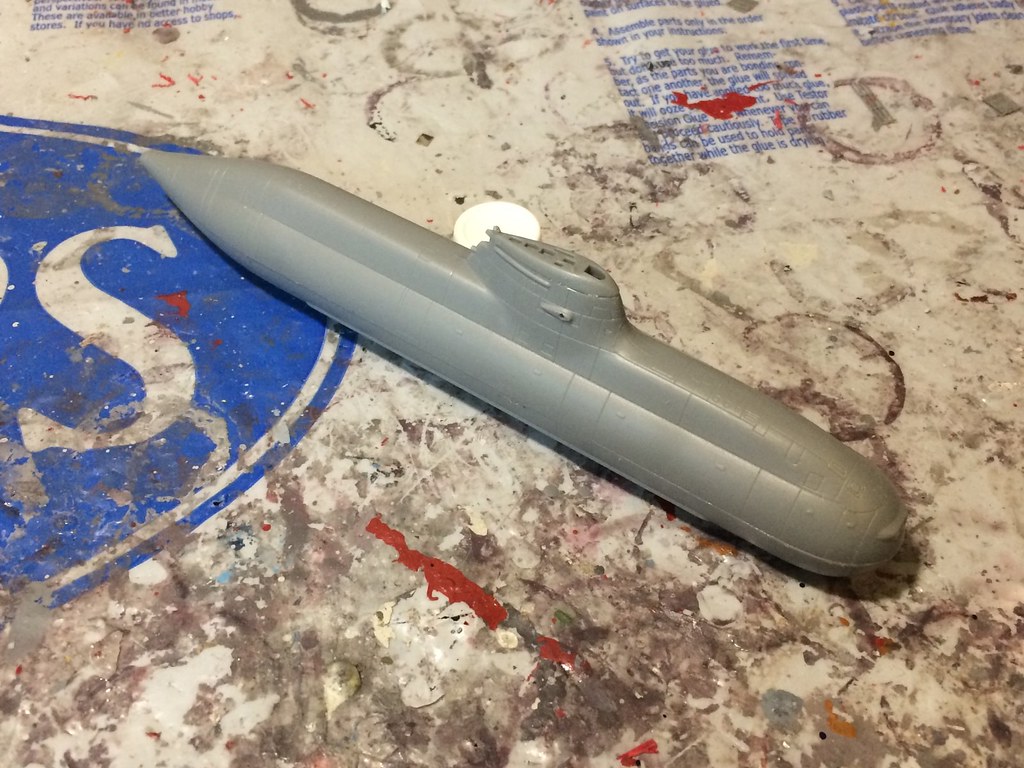
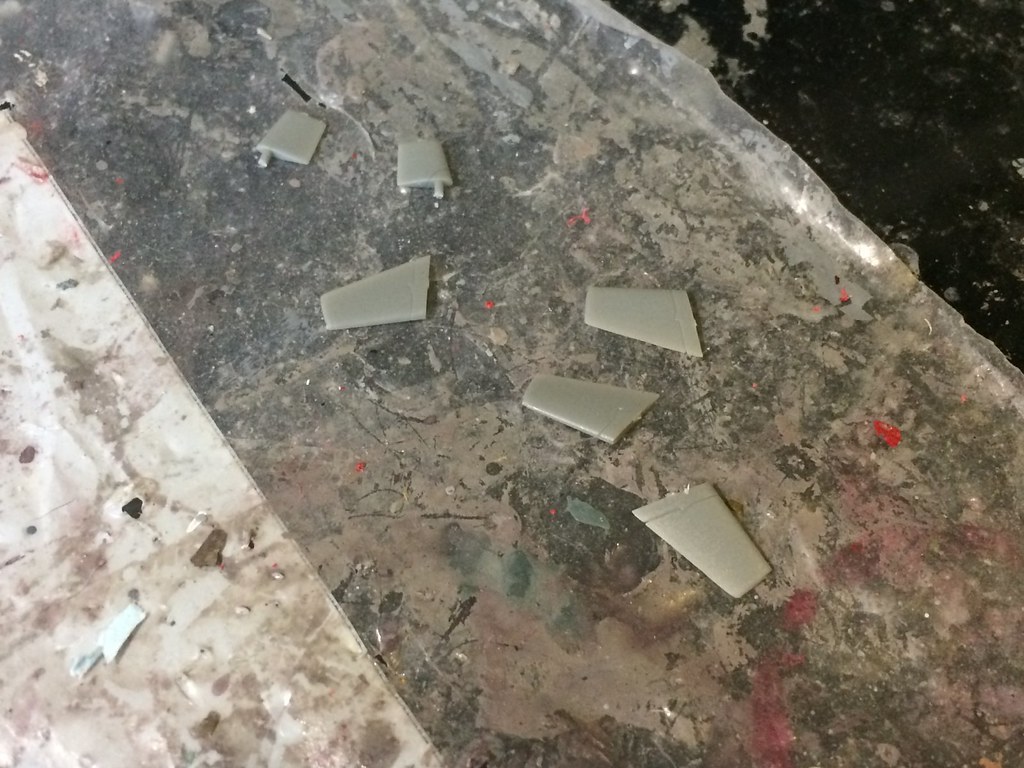
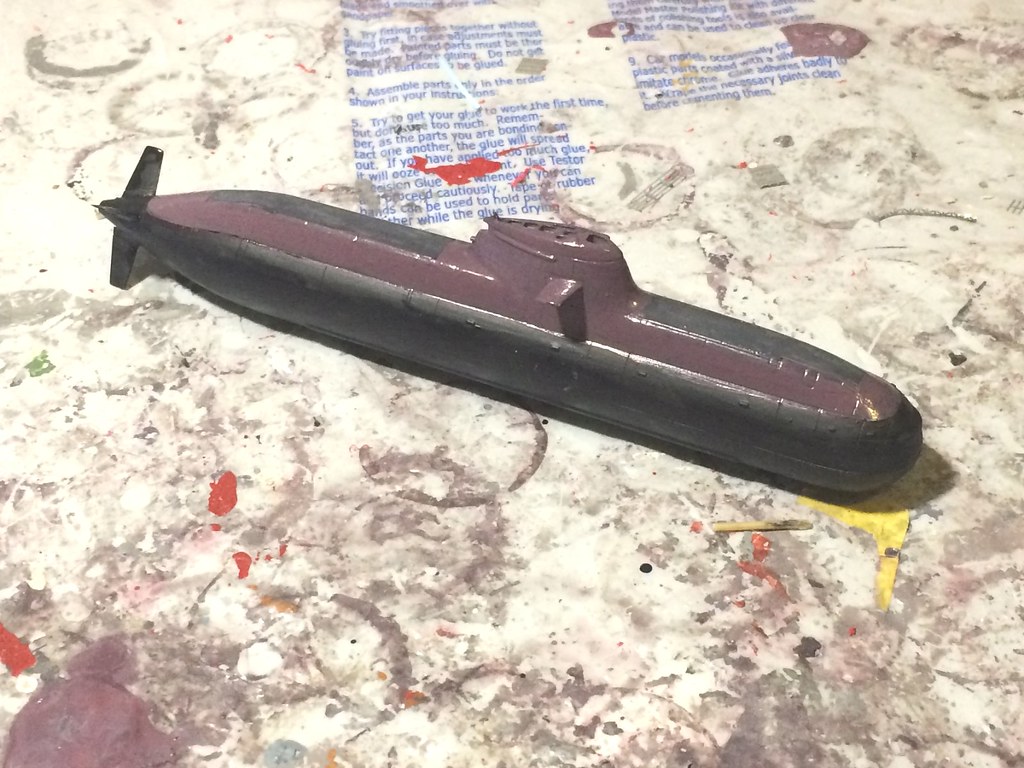
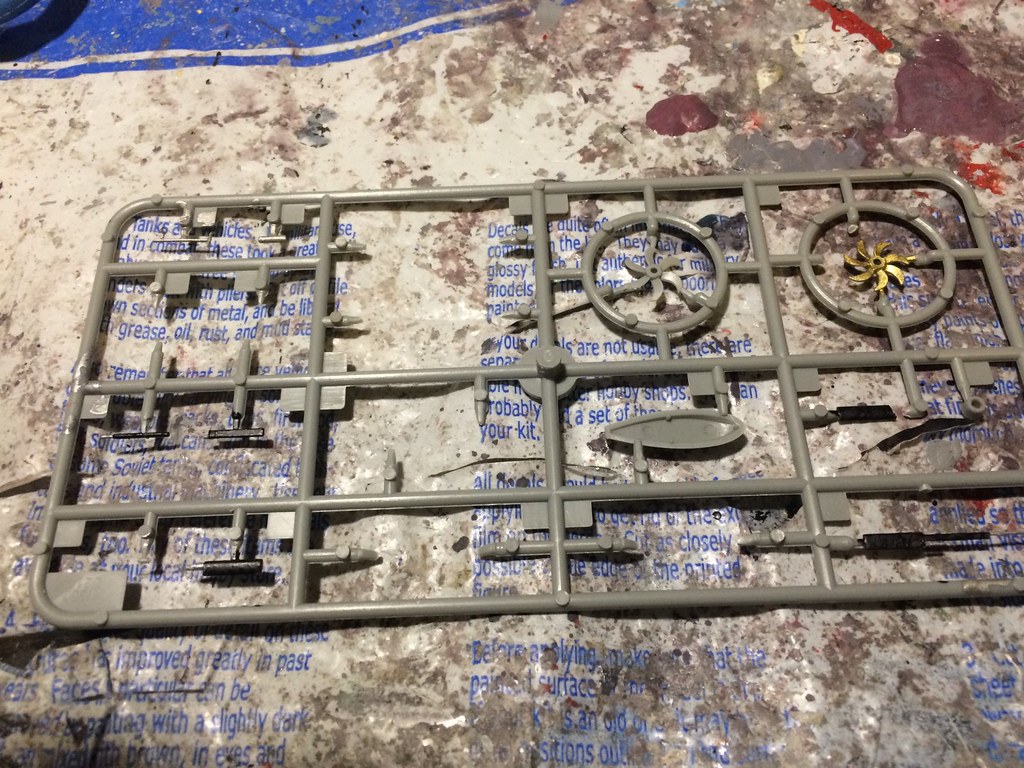
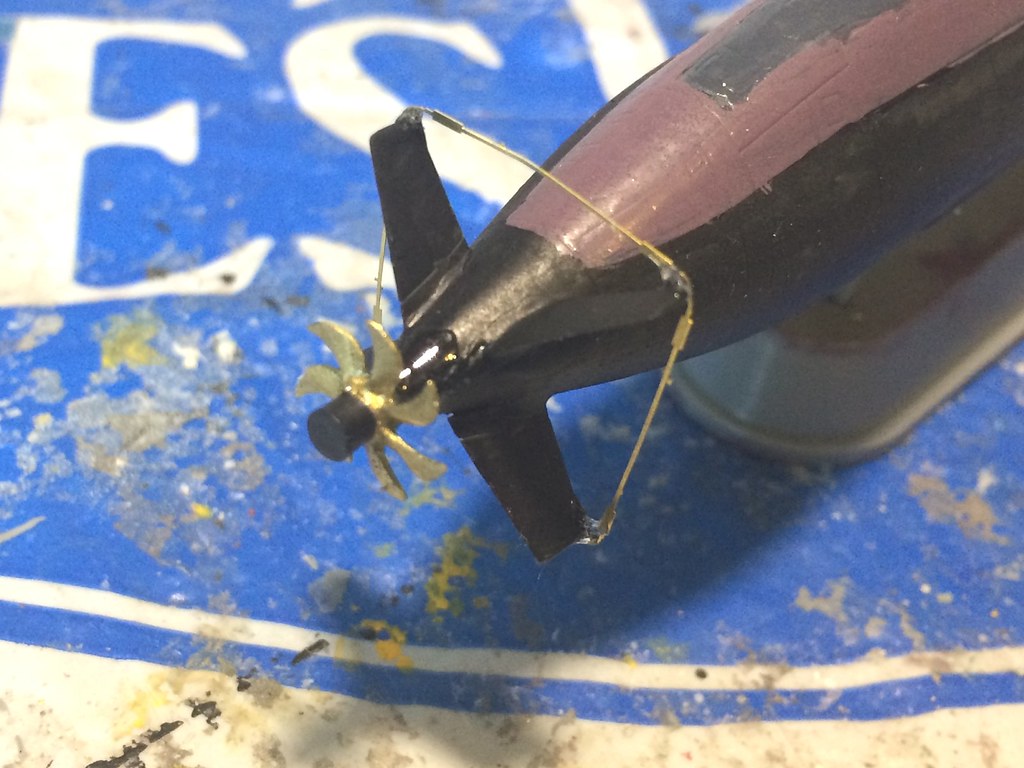
The Build - Antennae, towed array and painting - March 11, 2017 At this point I added the what I believe is the towed array aft around the control surfaces and as seen in the pictures, using the photo etch part for this. This part has to be carefully cut off the sprue and put in place so as to not deform or bend it. I then added all of the antennae and sesnors on the sail, as well as the phto etch protective pane for watch personnel. I also added the decals. The decals are from earlier marking schemes. Nowadays, they basically show the pennant number under the sail planes on either side, and the water marks. I liked the earlier scheme you can see on tsome of the pictures and so placed them accordingly. Here's how that turned out:
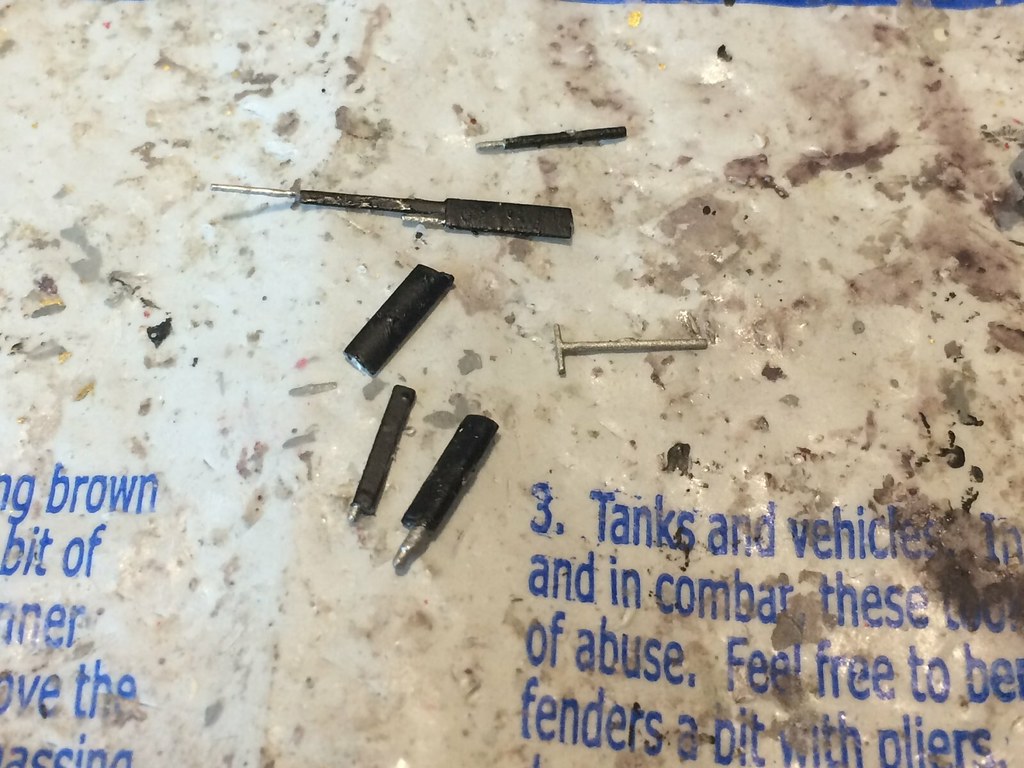
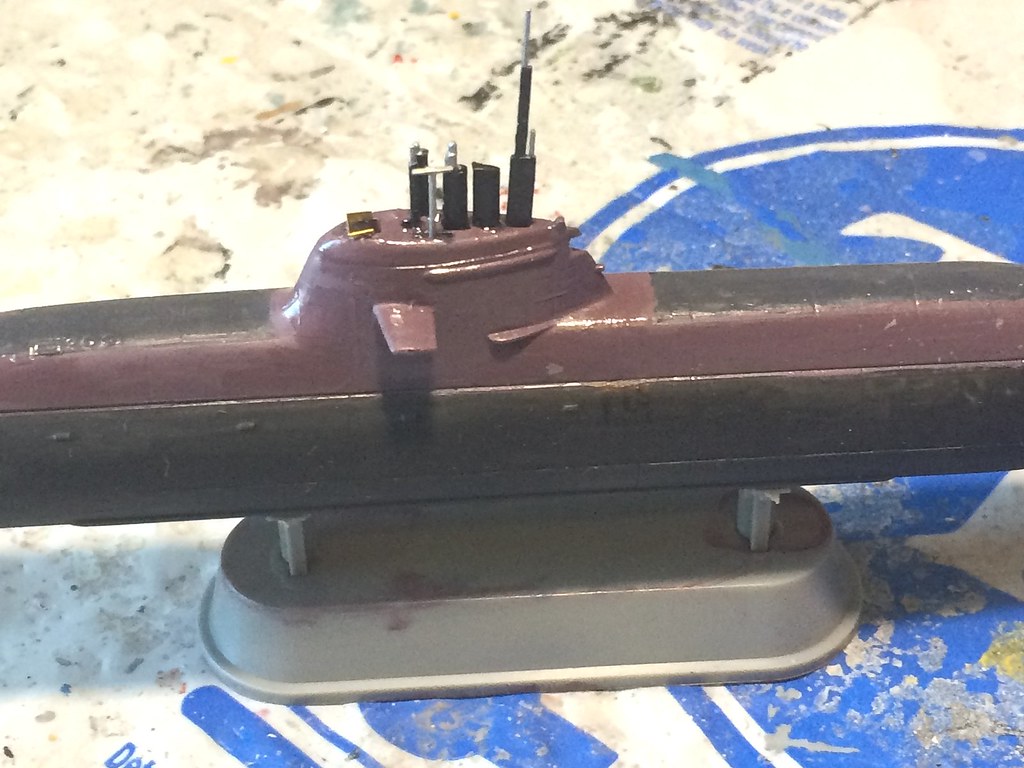
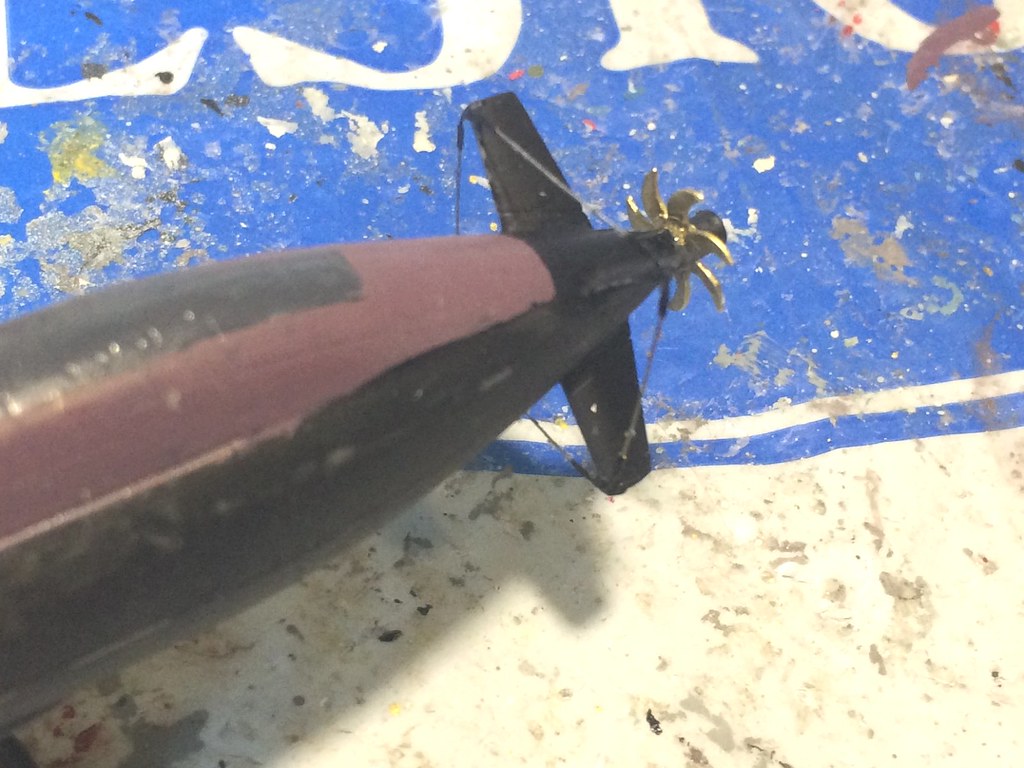
The Build - Completing the model - March 12, 2017 At this point the model was essentially completed. I did the touch up pain, and then adding a couple of coats of flat clear coat paint. I then took the standard postional pictures from all of the standard angles: Here's how she looks:
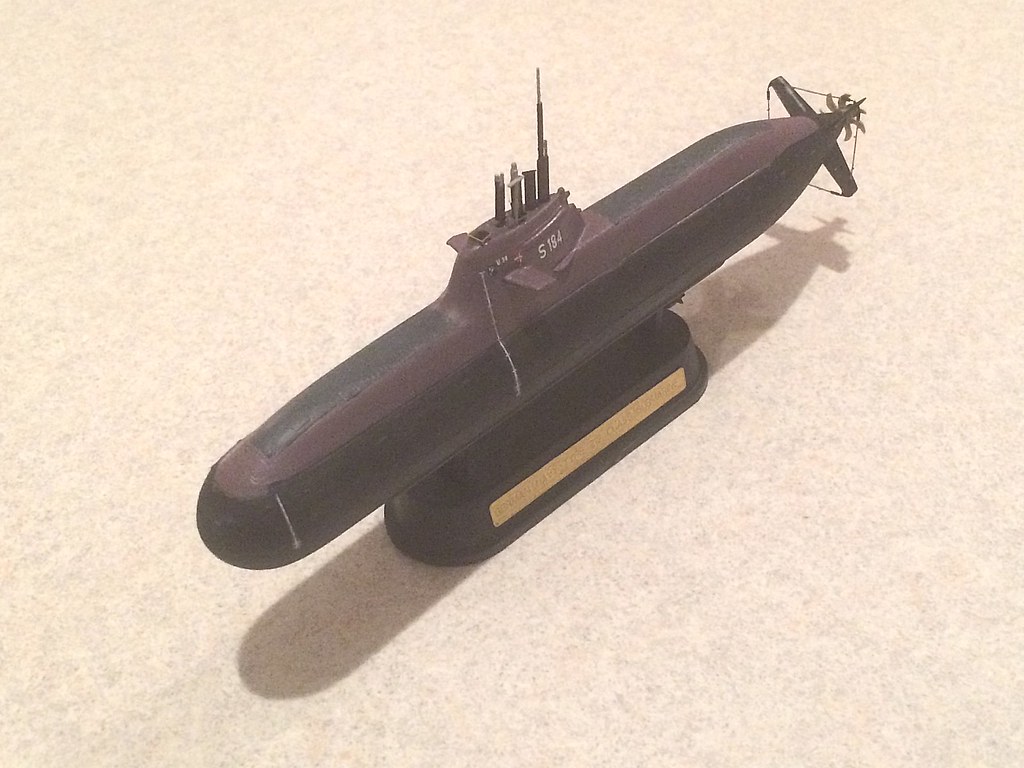
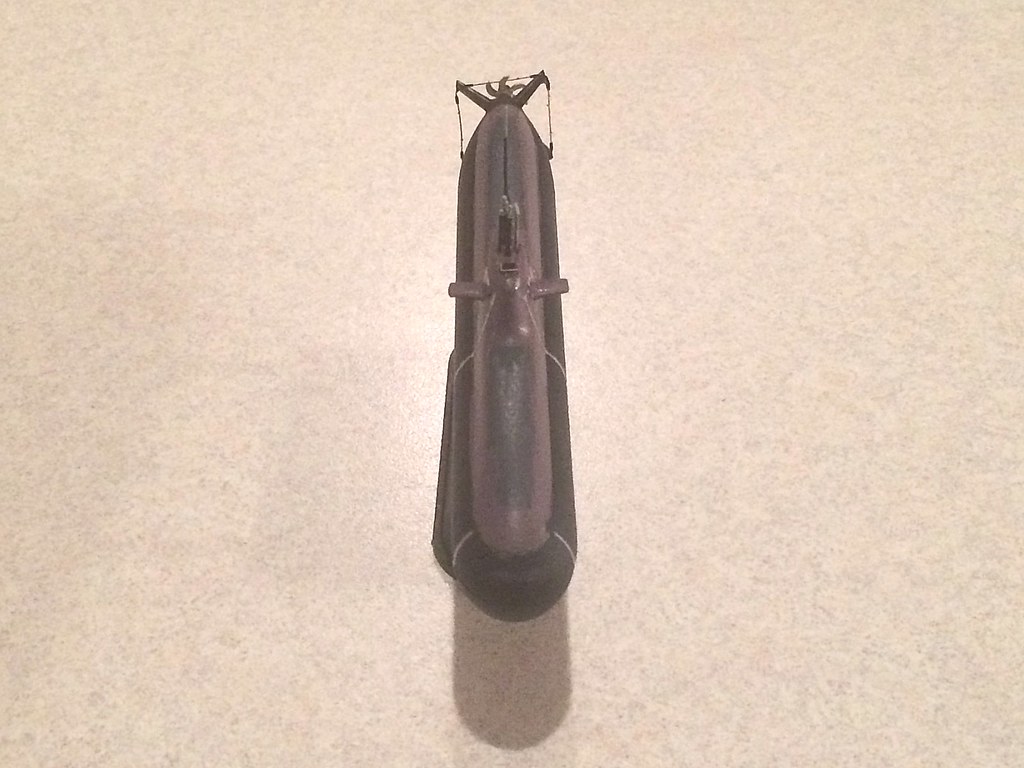
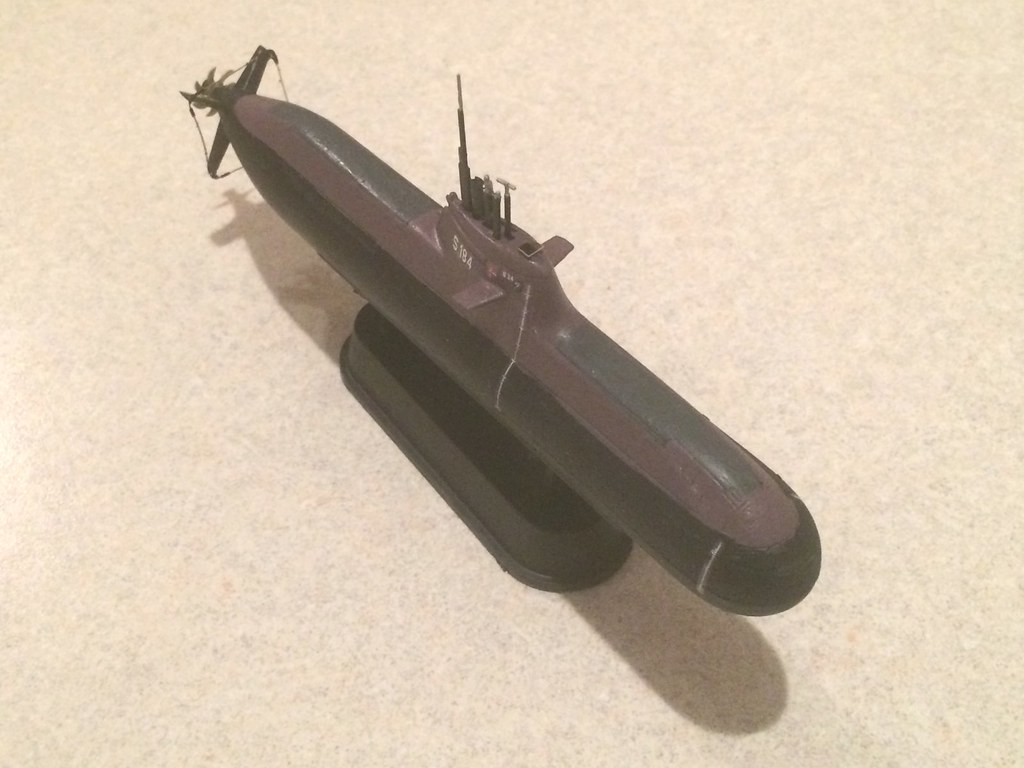
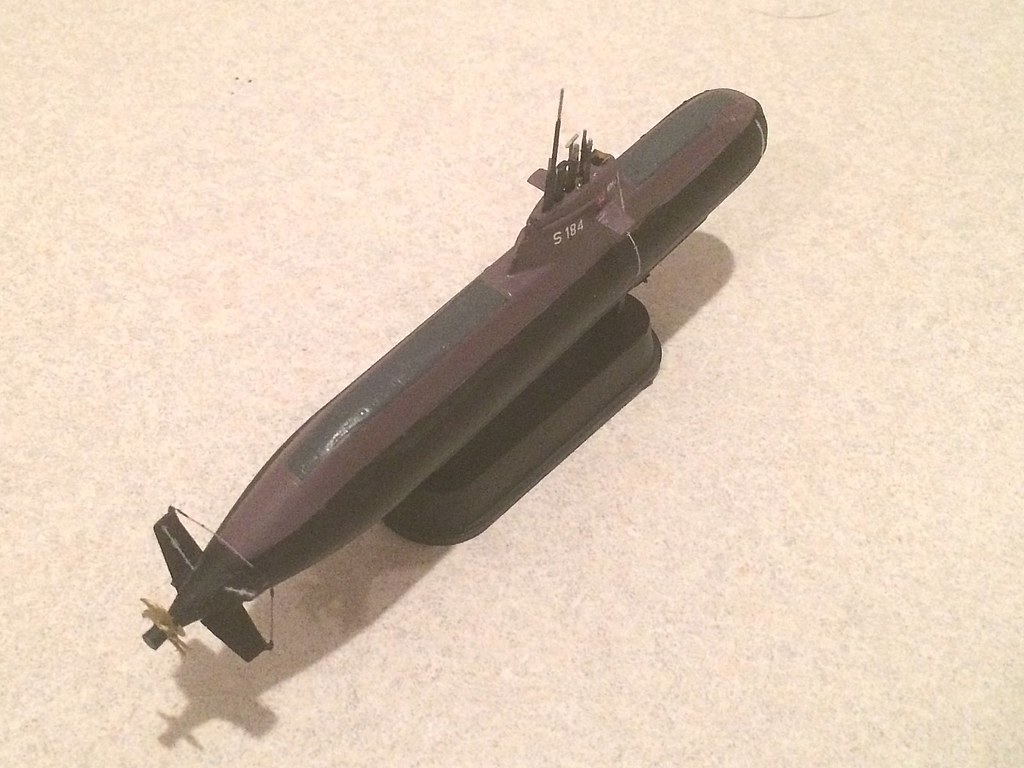
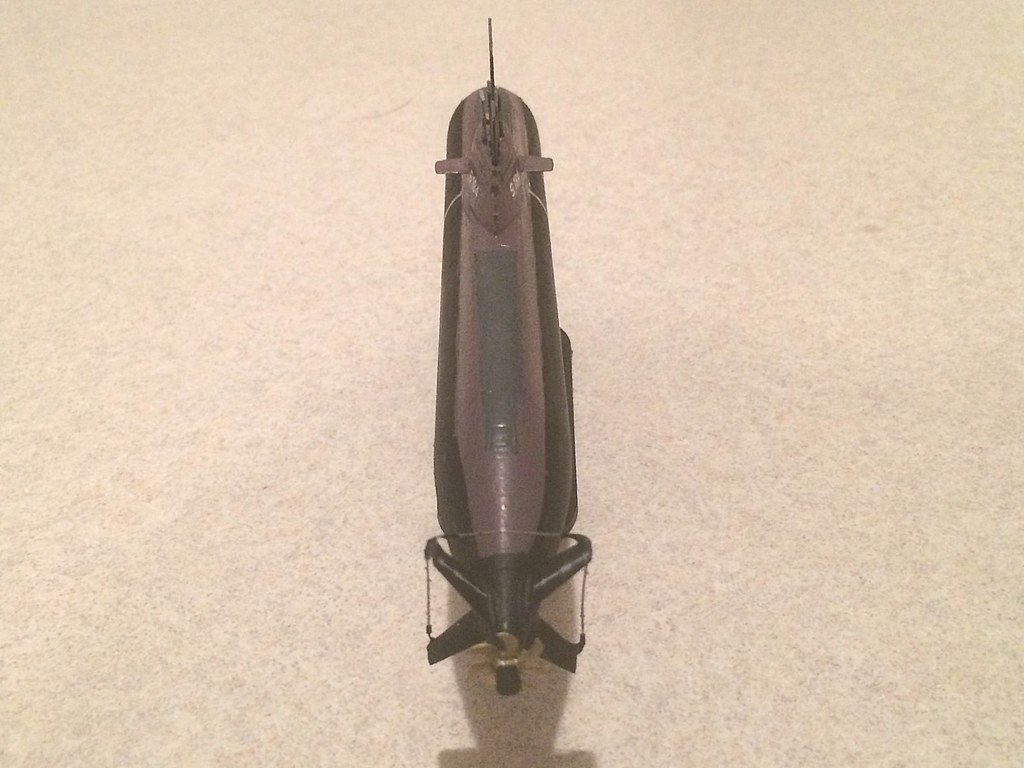



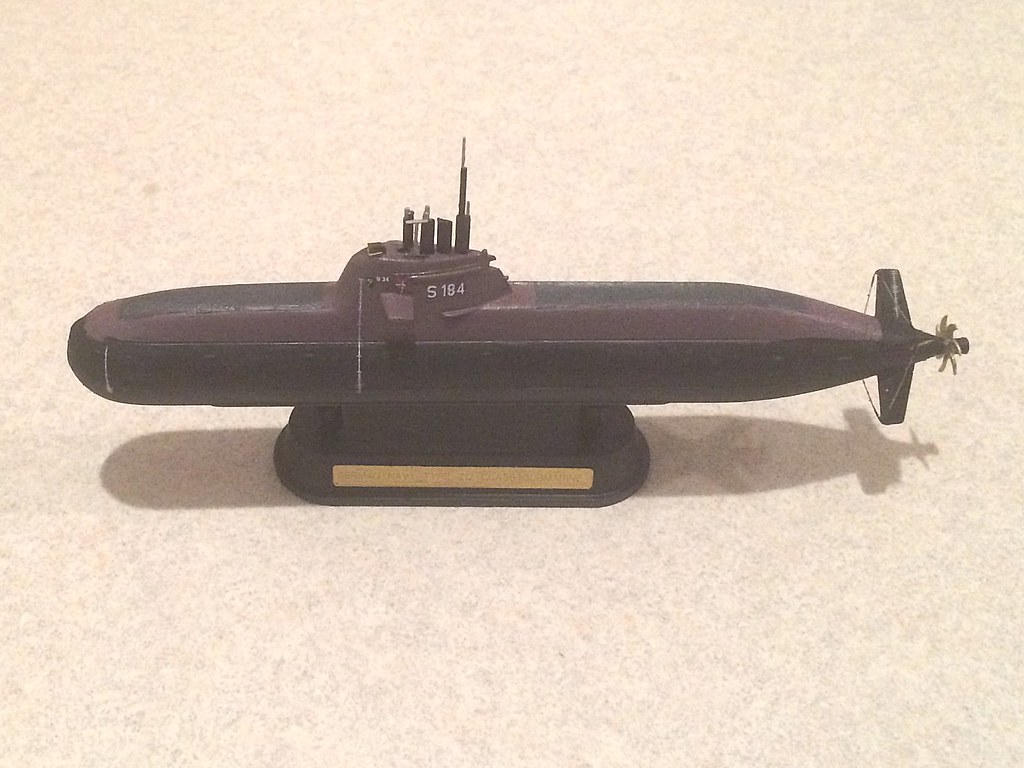
...and some close ups:
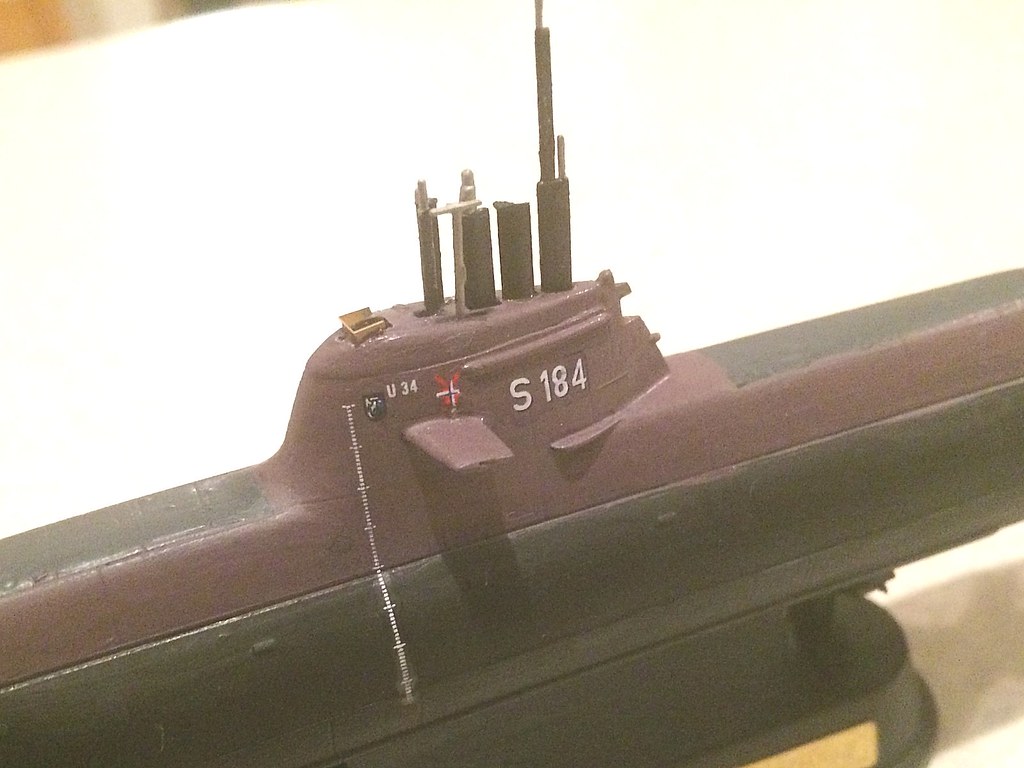
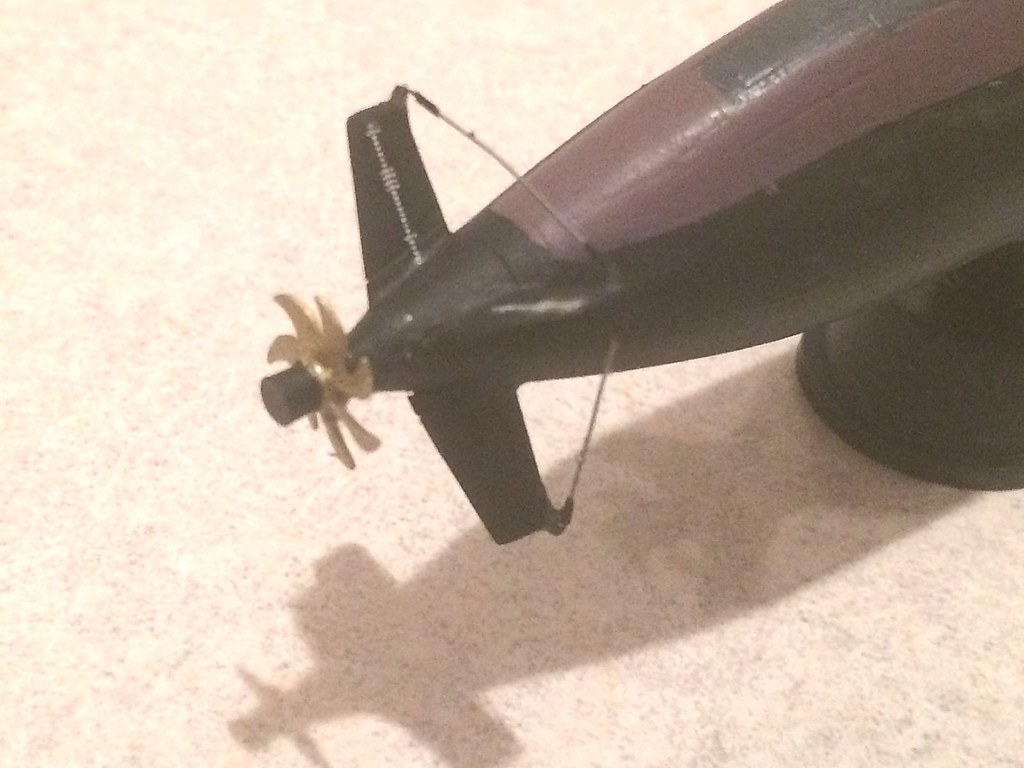
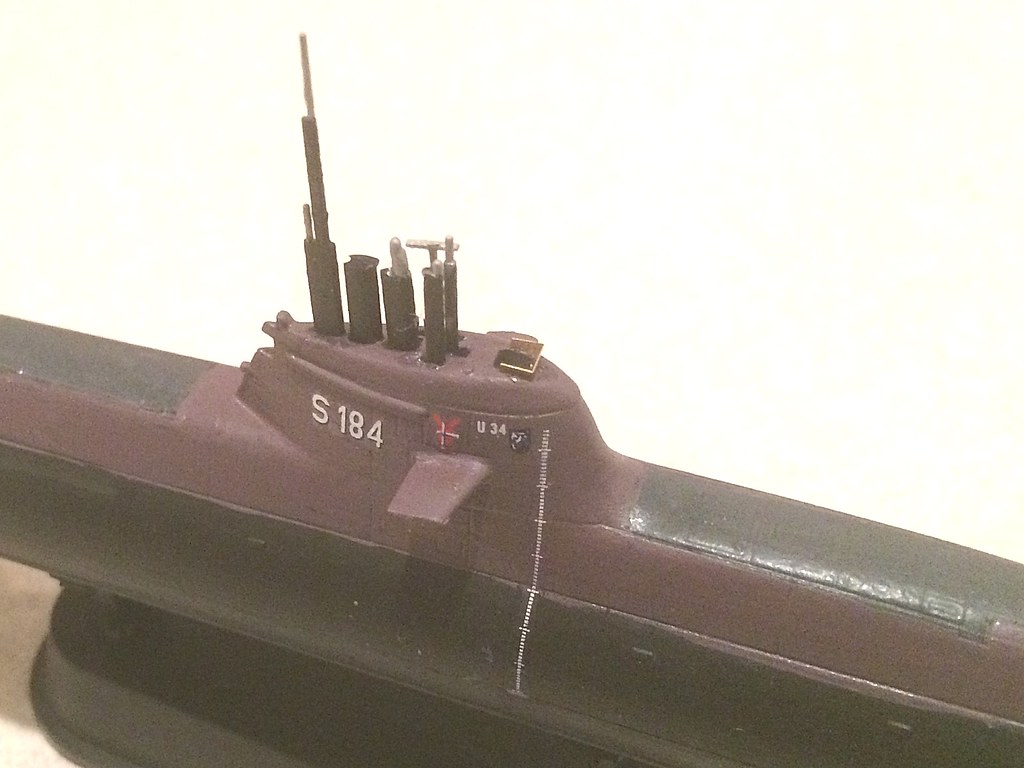
...and a couple with my other German vessels, the Type 122 Breman Class Frigate, F-212, KArsruhe, the Type 212 S184 sub, and the Type 125 Frigate, F222, BAden-Wurtenberg:\. You can really tell the diffeences in the displacements of these vessels here. The sub, with a diplacement of less than 2,000 tons, is almost 1/4 the size of the Type 125, F222 frigate. 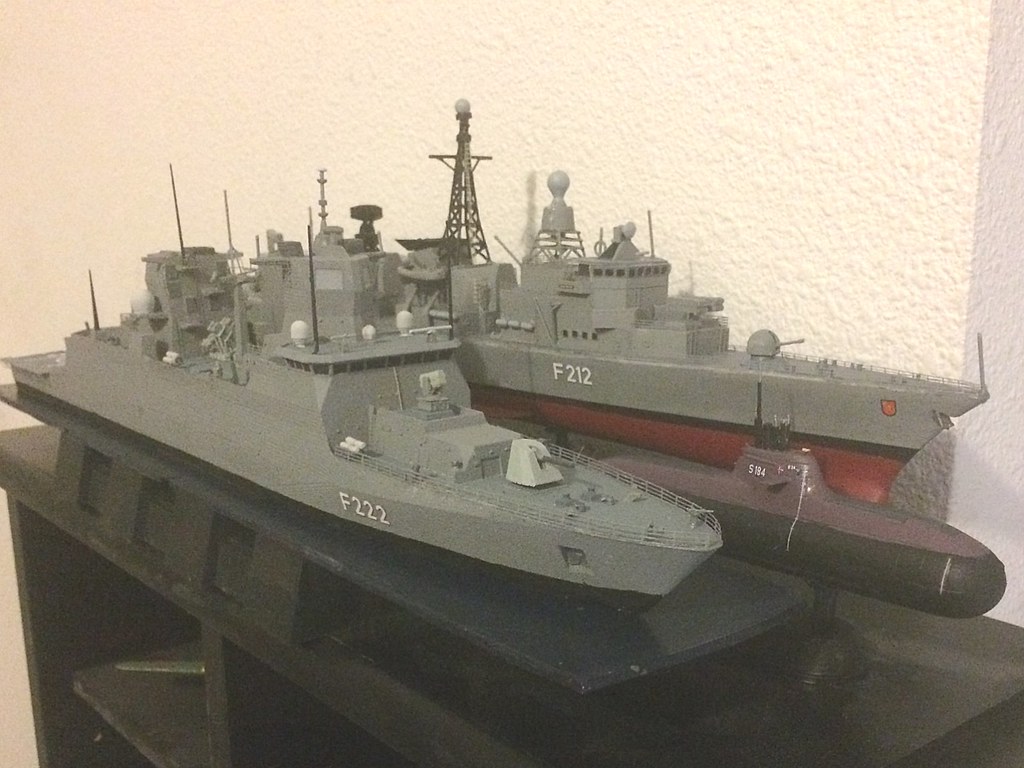
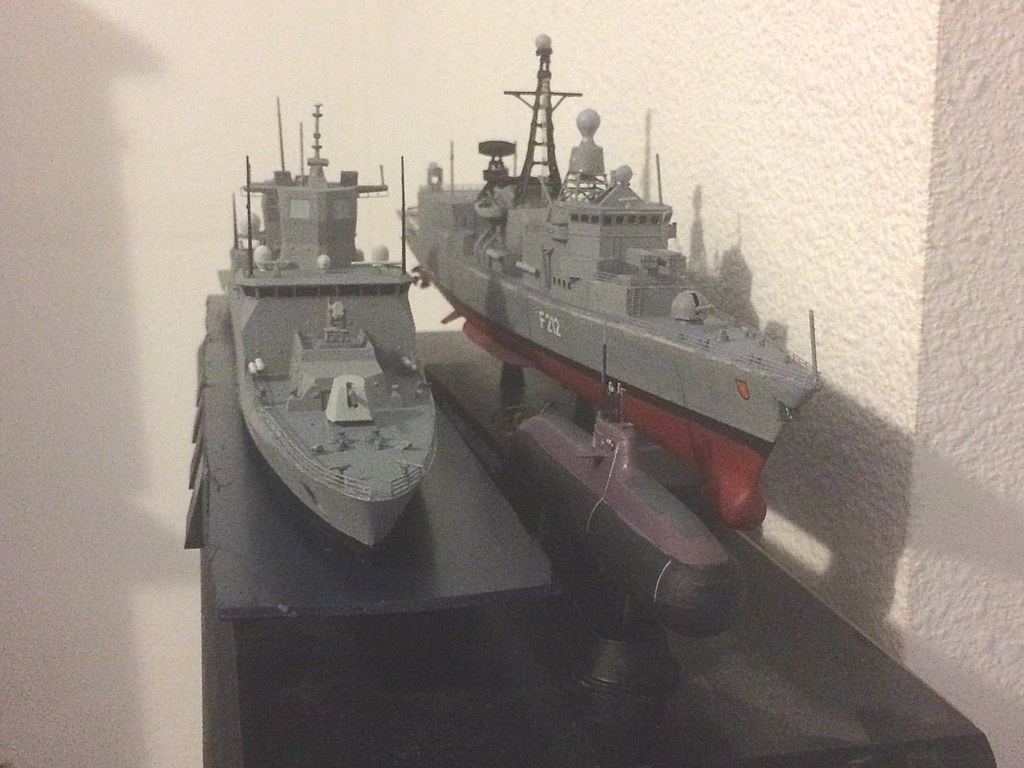
I always like the build of the 1/350 subs. They are relatively quick builds but come up with some really nice looking boats, whether they are large SSBN ballistic missile boats, large SSGN guided missile boats, or nuclear attack submarines (SSNs) or the diesel-electric boats (SSKs).
Completed national carrier and ARG groupings: The completion of the PLAN Carrier group was centered on the already completed Trumpeter's 1/350 scale PLA Navy's Aircraft Carrier CV-16, Liaoning, (in addition to the other escorts already completed) included Mini Hobby's PLAN Guangzhou, DDG-168. I recently pre-ordered a 1/350 scale model of the PLAN Type 071 LPD, Yuzhao Class, announced by Dragon and due out in October, 2013. I will end up adding two of those, probably LPD-998 Yuzhao and LPD-999, Jinggangshan, add the PLAN- DDG-139, Ningbo, and the PLAN DDG-115, Shenyang, along with the PLAN Weifang, FFG-550 and thus build a PLAN ARG. The completion of the US Carrier Strike group was centered on the completed Tamyia's 1/350 scale USS Enterprise, CVN-65, (in addition to the other escorts already completed) included Dragon's, USS Freedom, LCS-1, Dragon's USS Preble, DDG-88 and Hobby Boss's USS Texas, SSN-775. When a 1/350 scale USS Enterprise, CVN-80 (or any Gerald R. Ford Class) is released from Dragon, Tamiya, Dragon, or whomever else, I will add it to this group along with another AEGIS Cruiser. Whichever Ford Class coms out in 1/350 scale, I will build it as the USS Enterprise, CVN-80. The US ARG includes Tamiya's 1/350 scale, USS Iowa, BB-62 (which I have already completed), Gallery's 1/350 scale USS Iwo Jima LHD-7, Gallery's 1/350 scale (already completed), USS New York, LPD-21 (Completed), Cyber Hobby's USS Independence, LCS-2 (Completed), Bronco Model's 1/350 scale USS Coronado, LCS-4 (Completed), a Flight IIA US AEGIS class destroyer based on Dragon's 1/350 scale USS The Sullivans, DDG-68 (Completed), a Ticonderoga AEGIS cruiser (Completed), and a 1/350 scale Orange Hobbies USS Harper's Ferry, LSD-49...all of these models which I already own. The completion of the UK Group featured the Airfix 1/350 scale HMS Illustrious, R06 as its center piece until a 1/350 scale Queen Elizabeth carrier is released. When that happens, I will add that carrier to the group as its centerpiece. The Royal Navy CSG will also include two Airfix 1/350 scale Daring Class DDGs (one of which is already completed), two Dragon 1/350 scale Type 23 HMS Duke class Frigates (one of which is already completed), and the Hobby Boss 1/350 scale HMS Astute SSN (which is also already completed) and Airfix 1/350 scale HMS Trafalgar SSN. One day, when a 1/350 scale HMS Ocean LPD comes out, I will use it to start building a Royal Navy ARG. The French CSG is centered on Heller's 1/400 scale Charles De Gaulle, R91. I have purchased the 1/400 scale Heller French De Grasse, D612 DDG, which is an ASW DDG, the French Aconit F713 and Gueprattet F714 Lafayette FFGs, both of which are Lafayette class frigates. These four vessels round out my French CSG and are all completed. As soon as a French Robin class nuclear sub, like the French Pearle S606 SSN is released in 1/350 or 1/400 scale, I will add that to the group. Also as soon as the Forbin D620, Horizon class anti-air DDG is released in 1/350 or 1/400 scale, I will purchase one of them for the AAW defense DDG. One day, when a Mistral Class LPD is released in 1/350 or 1/400 scale so I will create a French ARG. The completion of the Japanese JMSDF group was centered on Fujimi's very finely detailed, 1/350 scale Hyuga, DDH-181. It will be escorted by Dragon's 1/350 scale DDG-177, Atago, an AEGIS class DDG and the JMSDF, DDG-174, Kongo class (which I own), Dragon’s 1/350 scale DDG-114 Susunami and DDG-111 (both of which are Takinami Class DDGs which I own), and by the 1/350 scale SS-503 Hakuryu (which I own), one of Japans new, very modern and capable AIP Diesel Electric submarines. It also included a Arts Technic 1/350 scale, DDG-116 Teruzuki (Akizuki class) destroyer. Should a 1/350 scale Osumi Class LPD and/or the larger 1/350 Izumo class DDH be released, I will buy those vessels and add them to the group. Then, finally the Russian CSG (centered on Trumpeter's Kuznetsov which I own) the Russian Kirov Class nuclear battle cruiser (CGN), the Peter the Great, by Trumpeter, the Russian Slava Class cruiser, Varyag by Dragon (which I own), two Dragon 1/350 scale Udaloy DDGs (which I own), Hobby Boss's Akula II class SSN (which I own), and the new Yasen class Russian SSN (which I own), all in 1/350 scale. These are all completed as well. Sometime in the more distant future when a 1/350 scale Russian version of the French Mistral class comes out (which is building in real life right now), I will add two of those and build a Russian ARG. Recently I purchased Heller's 1/400 scale Foch, the Clemenceau Class carrier that was sold to the Brazilians in 2000 and in 2002 was refitted and became the Brazilian CV, Sao Paulo, using steam catapults. I will build the model as the Sao Paulo and thus start a Brazilian group, though the Type 22 DDGs and the FFGs the Brazilians use are not available at present. I have however purchased a set of 1/400 scale A-4 Skyhawks and S-3 Trackers to build a suitable air wing for the Sao Paulo. Then, again, once the models are available, I'd like to build an Italian Carrier Strike Group centered on the Cavour and their Horizon DDGs, a Spanish Carrier Strike Group centered on the Juan Carlos and their F-100 AEGIS FFGs, and ultimately an Australian Strike Group centered on the new Canberra Class LPD and the Hobart class AEGIS DDGs. If they ever build the models, an Indian Carrier Strike Group centered on either the Vikramaditya or their new ADS Carrier, the Vikrant, and their Kolkata class DDGs and Shivlak class FFGs would also be nice. You can see all of these actual carriers, read their histories and specifications at my site:
|
FINE ALL-AMERICAN, LIBERTY ORIENTED BOOKS AUTHORED BY JEFF HEAD
BACK TO JEFFHEAD.COM
Copyright © 2012 by Jeff Head, All Rights Reserved

